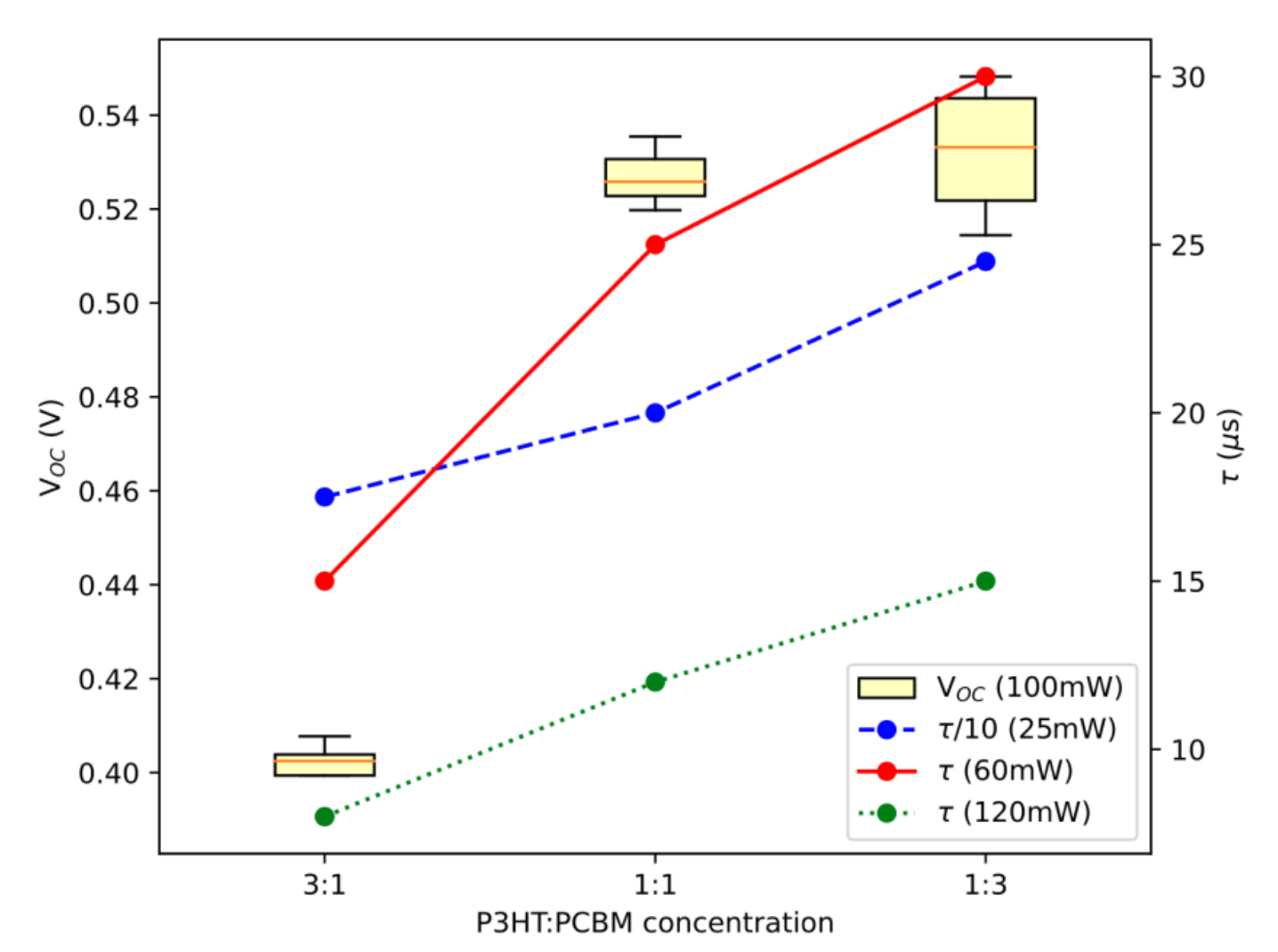 Our researchers were measuring the performance of organic solar cells in order to validate a novel experimental method, which can be used to study the non-radiative recombination processes. In details, the influence of P3HT:PCBM ratio on thermal and transport properties of solar cells were determined by photothermal beam deflection spectrometry, which is advantageous tool for nondestructively study of bulk heterojunction layers of organic solar cells. P3HT:PCBM layers of different P3HT:PCBM ratios were deposited on top of PEDOT:PSS/ITO layers which were included in organic bulk-heterojunction solar cells. The thermal diffusivity, energy gap and charge carrier lifetime were measured at different illumination conditions and with a different P3HT:PCBM ratios. As expected, it was found that the energy band gap depends on the P3HT:PCBM ratio. Thermal diffusivity is decreasing, while charge carrier lifetime is increasing with PCBM concentration. Energy band gap was found to be independent on illumination intensity, while thermal diffusivity was increasing and carrier lifetime was decreasing with illumination intensity. The carrier lifetime exhibits qualitatively similar dependence on the PCBM concentration when compared to the open-circuit voltage of operating solar cells under AM1.5 illumination. BDS and standard I-V measurement yielded comparable results arguing that the former is suitable for characterization of organic solar cells. Results were published in https://doi.org/10.3390/ma16020617.
Our researchers were measuring the performance of organic solar cells in order to validate a novel experimental method, which can be used to study the non-radiative recombination processes. In details, the influence of P3HT:PCBM ratio on thermal and transport properties of solar cells were determined by photothermal beam deflection spectrometry, which is advantageous tool for nondestructively study of bulk heterojunction layers of organic solar cells. P3HT:PCBM layers of different P3HT:PCBM ratios were deposited on top of PEDOT:PSS/ITO layers which were included in organic bulk-heterojunction solar cells. The thermal diffusivity, energy gap and charge carrier lifetime were measured at different illumination conditions and with a different P3HT:PCBM ratios. As expected, it was found that the energy band gap depends on the P3HT:PCBM ratio. Thermal diffusivity is decreasing, while charge carrier lifetime is increasing with PCBM concentration. Energy band gap was found to be independent on illumination intensity, while thermal diffusivity was increasing and carrier lifetime was decreasing with illumination intensity. The carrier lifetime exhibits qualitatively similar dependence on the PCBM concentration when compared to the open-circuit voltage of operating solar cells under AM1.5 illumination. BDS and standard I-V measurement yielded comparable results arguing that the former is suitable for characterization of organic solar cells. Results were published in https://doi.org/10.3390/ma16020617.
Archives
- May 2025
- July 2024
- March 2024
- August 2023
- June 2023
- November 2021
- April 2021
- March 2021
- January 2021
- December 2020
- September 2020
- May 2020
- December 2018
- November 2017
- September 2017
- August 2017
- March 2017
- January 2017
- October 2016
- June 2016
- October 2015
- March 2015
- October 2014
- April 2014
- January 2014
- June 2013
- May 2013
- January 2013
- September 2012
- July 2012
- June 2012
